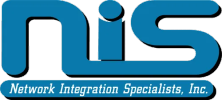Network Integration Specialists, Inc. Blog
The Dark Side of AI
Artificial intelligence, or AI, has upended the way that we discuss technology in business, society, and individual everyday life. While we mostly focus on the benefits of the technology, there are many downsides to consider as well. That’s what we’d like to discuss today; how AI has a dark side to it that potentially requires regulation.
Understanding AI
AI is, in short, a system of complex algorithms, data, and computers that can mimic human intelligence.
Through math and logic, AI can simulate human intelligence, and for the most part, it can do so quite effectively. However, there are problems with this technology that must be considered—and it’s not all strictly cybersecurity-related, either.
In short, there will always be those who want to use technology for evil rather than good.
Hackers can use AI to automate their threats. Companies can use AI to eliminate costs and lay off employees. Individuals or government agencies can use AI to misrepresent the ideas of others to manipulate the masses into believing their wacky ideas.
Indeed, if something technology-related is good, you can count on someone bad ruining it for everyone else.
Part of the problem is the “AI black box,” which refers to the idea that people simply don’t know how AI does what it does. The old adage from math class, “Show your work,” is important here, and there’s a serious lack of transparency surrounding how AI comes up with the responses it gets. And since AI is often trusted to handle some serious tasks, it’d be foolish to trust something you don’t know or understand with total control, yet some do it anyway.
This brings us to our final point: AI is not some omnipotent force, some all-knowing system that can fabricate content from nothing.
AI runs on data, and as such, you get out what you put in. The more data it’s supplied with, the more reliable and quickly it can push out an acceptable response. But the kicker here is that if the data is biased, AI’s response will be biased, too.
So, if the data and the AI are biased, the product will be biased, which will make the end result dangerous and counterproductive.
The Question of Regulation
While regulation could make AI much more fair and safe to use, the answer is not as simple as you might think.
If you don’t put rules in place, AI could make unfair and biased decisions—decisions that invade people’s privacy and have a negative impact on society. A lot of it also boils down to purpose. For those who want to use AI to breach the privacy and security of others, regulations can go a long way toward making that goal harder.
However, some believe such rules will only slow down the growth of AI and the technology that powers it.
Thus, the challenge becomes how to strike a balance between safety and allowing this technology to grow. If the rules are too rigid, small companies will find it harder to compete and survive in an increasingly competitive business environment. Those who believe mandates are too strict still believe guidelines would be helpful to keep AI creators responsible and accountable, but how effective this practice would be is a bit nebulous at present.
All in all, the primary goal of those arguing for the regulation of AI is for the protection and safety of others and their ideas, which can never be considered an inherently bad thing.
We’re sure you have plenty of questions about AI and how you can use it for your business. To learn more, call Network Integration Specialists, Inc. at (804) 264-9339.


Comments